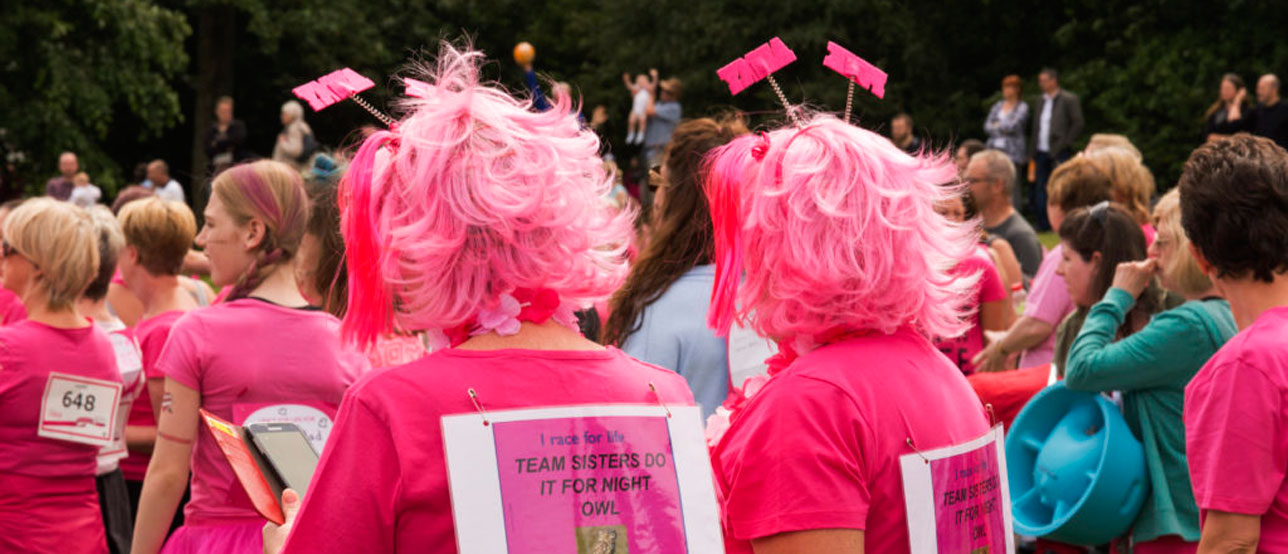In reality, there are a number of stages between someone reading about your work and them making a financial commitment. But PR can bridge the gap between the call to action and the money in the bank.
The fundraisers in your organisation work hard to engage and encourage supporters to raise money. PR should reiterate and build on the key messages fundraisers are using as part of a coordinated strategy to increase the charity’s income.
Both PR and fundraising teams (or individuals, depending on the size of your organisation) should be pulling in the same direction, so it’s important to work together and share information on a regular basis.
Talk to your in-house fundraiser or fundraising team early on in your planning. Put regular meetings into the diary and share information as you go to make for more effective campaigns and a better relationship.
It’s useful for PRs to think about the difference between people who give donations (donors) and those who give their time to raise funds for you (supporters).
Donating to a charity can be a one-off action that doesn’t require a great deal of emotional involvement. Donations could be motivated by the cause, by personal experience or, more likely, by a friend or colleague. How many times have you been asked to make a donation to a friend or family member who’s doing a 5k run, a skydive or the London marathon?
Supporters like those friends and relations, however, invest a great deal more effort and commitment. They can spend considerable time and energy convincing their donors to give money to the cause. That effort needs to be recognised and responded to.
Think about the last time you were personally motivated to raise money for a charity. What prompted you to support that charity over another? Based on that experience would you support them again?
There may be a number of charities related to any one cause or issue and this is where PR can make the difference. Potential supporters need to know why funds are needed and the difference they will make.
As well as giving them a clear cause to respond to, PR also needs to demonstrate to supporters that the money will be spent appropriately and will have real impact.
Case studies are a key tool to link supporters’ fundraising with the cause. Used carefully, they illustrate not just the service or the equipment funding has paid for but the effect of this on real people’s lives on a very personal level.
Think about campaigns asking for support to fund medical research. You know your donation will help scientists in their work, but it’s only when you hear from someone living with a devastating health condition that you truly understand the need, and the difference your support will make.
It is important that supporters are allowed to feel powerful and able to deliver real change. It’s a feeling they’ll want to repeat, raising money again and again.
Case studies should show how the money that’s been raised has changed their lives. Invest time in developing a strong and effective case study library that will help to motivate fundraisers and donors alike.
Social channels can be useful PR tools in supporting volunteer fundraisers.
It’s important to think about how to use social media as part of your organisation’s PR strategy, and, in particular, how it can be used to generate income.
Social media can be a way of drip-feeding key messages or statistics in an unobtrusive way. They force you to keep the message focused and to the point, delivering the greatest impact possible in a handful of well-chosen words or in a photo or infographic.
Think about what response you want supporters to have to a message or an image, and the route they would take if you inspire them to make that commitment and raise money for your organisation – where do you need to link them through to, for example?
Encourage supporters to spread awareness by using their own channels. Provide strong content – images, infographics and short films, as well as text. But it’s important to allow people to use the content as they wish. Don’t be too controlling, as you’ll lose impact.
Keep your call to action simple and have a clear strategy. Is a fundraising ask the right thing to include in social content, or should you use those channels to build your network or raise awareness of your cause among a particular audience?
It is easy to put a great deal of time and effort into sending press releases out to the media about supporters running a marathon, climbing a mountain or sitting in a bath of baked beans.
But when was the last time you sponsored a stranger after reading about them online?
Think about the potential return for the time you spend on media relations and consider putting together ‘toolkits’ for supporters to contact journalists themselves. Template press releases and factsheets are simple and effective.
Personal challenges and events like these can provide colour and interest in the context of wider news angles and issues so don’t disregard them. But consider how you can use them to best effect, how they can add weight and a personal angle to your key messages and help to strengthen your call to action.
It’s tempting to try to secure publicity for every passionate supporter of your cause. Toolkits are a great way of harnessing that passion and letting less newsworthy fundraisers do their own PR. Include key messages and top tips, and make sure you’re accessible on the phone if they need your help.
Recognising an individual’s contribution is crucial to retaining their support and encouraging them to continue fundraising.
If a supporter feels as though they are just a number, just another runner in a race or a total on a spreadsheet, they could turn their passions elsewhere.
Events can be hugely motivational for supporters by giving them the opportunity to meet some of the people they are helping. Events make involvement with a charity a much more personal and engaging experience, strengthening the relationship and making the next ‘ask’ from your fundraising team a much easier one.
But plan events carefully. While they like to feel appreciated, the last thing supporters want is their hard-raised money spent on the party rather than the cause.
Recognition is particularly important when it comes to corporate support. Businesses that invest time or money in your organisation will usually want their contribution to be visible through PR to their industry, their local community and to potential customers.
Be clear about their expectations, and yours, and be sure that your supporters are happy for their stories to be used in the media. Illustrating the benefits to them may also inspire other organisations to contribute and get involved.
If you’ve never raised money for a charity, give it a try. You’ll appreciate how much energy people put into it and you’ll see how well or how badly the charity responds.
It’s important to measure the success of PR but it’s not easy to determine how much it has contributed to the funds raised.
If supporters are registering for a fundraising pack you can ask them how they heard about you, but that may be one on the scoreboard for the fundraising team.
It would be the role of PR to motivate people who’ve registered to follow through and actually raise some money. And you can check if spikes in income correspond with media coverage.
PR and fundraising can each be effective individually, but the best chance of success lies in a positive, coordinated relationship. Plan regular catch-up meetings and work together closely to plan your events or campaigns.
And the next time your fundraising colleagues put a collection bucket in your hand, see it as an opportunity to meet your next case study.




